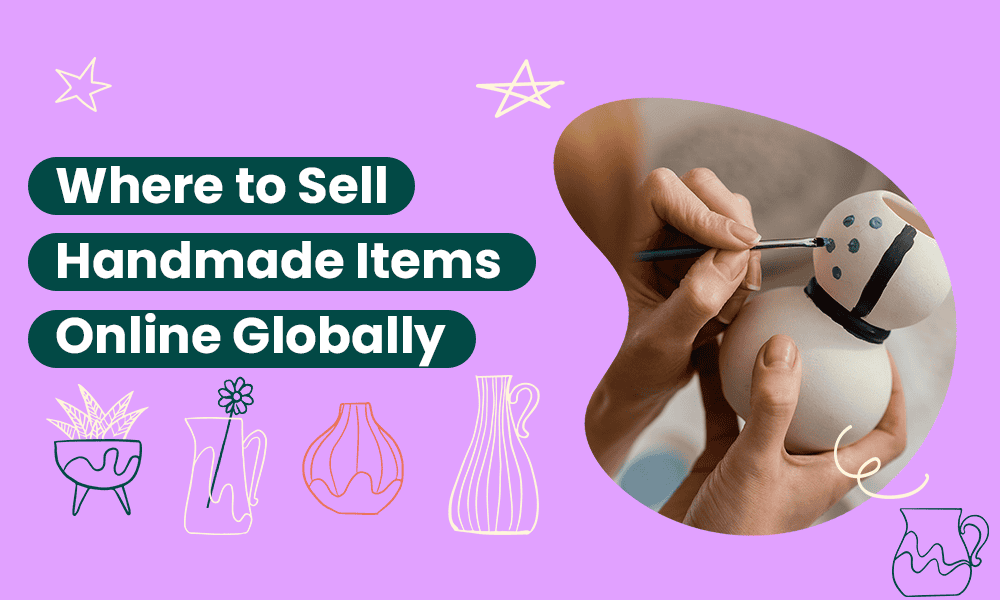After reading our guide to the best homemade goods to produce, you’ve decided to start selling your wares. You’re very excited about this new venture. You want to find a strong platform or several to sell on to maximize profitability.
Where do you even start? The answer depends on where in this wild world you reside. From South Africa to the United States and everywhere in between, you can set up shop and build your presence, earning a part-time or possibly full-time income from your handmade goods!
Key takeaways:
- The United States has the lion’s share of resources for selling handmade items, from Etsy to eBay. Many of these services welcome international sellers.
- Other parts of the world, from South Africa to the United Kingdom and Canada, have local resources for selling handmade goods with cultural flair for fun alternatives to Etsy.
In this blog post, we’ll show you where to sell handmade items online and the various platforms based on the country you live in.
Let’s get started.
Table of Contents
Selling Handmade Items in the United States
By far, you have the biggest assortment of online marketplaces for selling DIY goods if you’re based in the United States. There’s the highly known and beloved Etsy, but that’s merely scratching the surface.
Here’s a complete overview.
Etsy
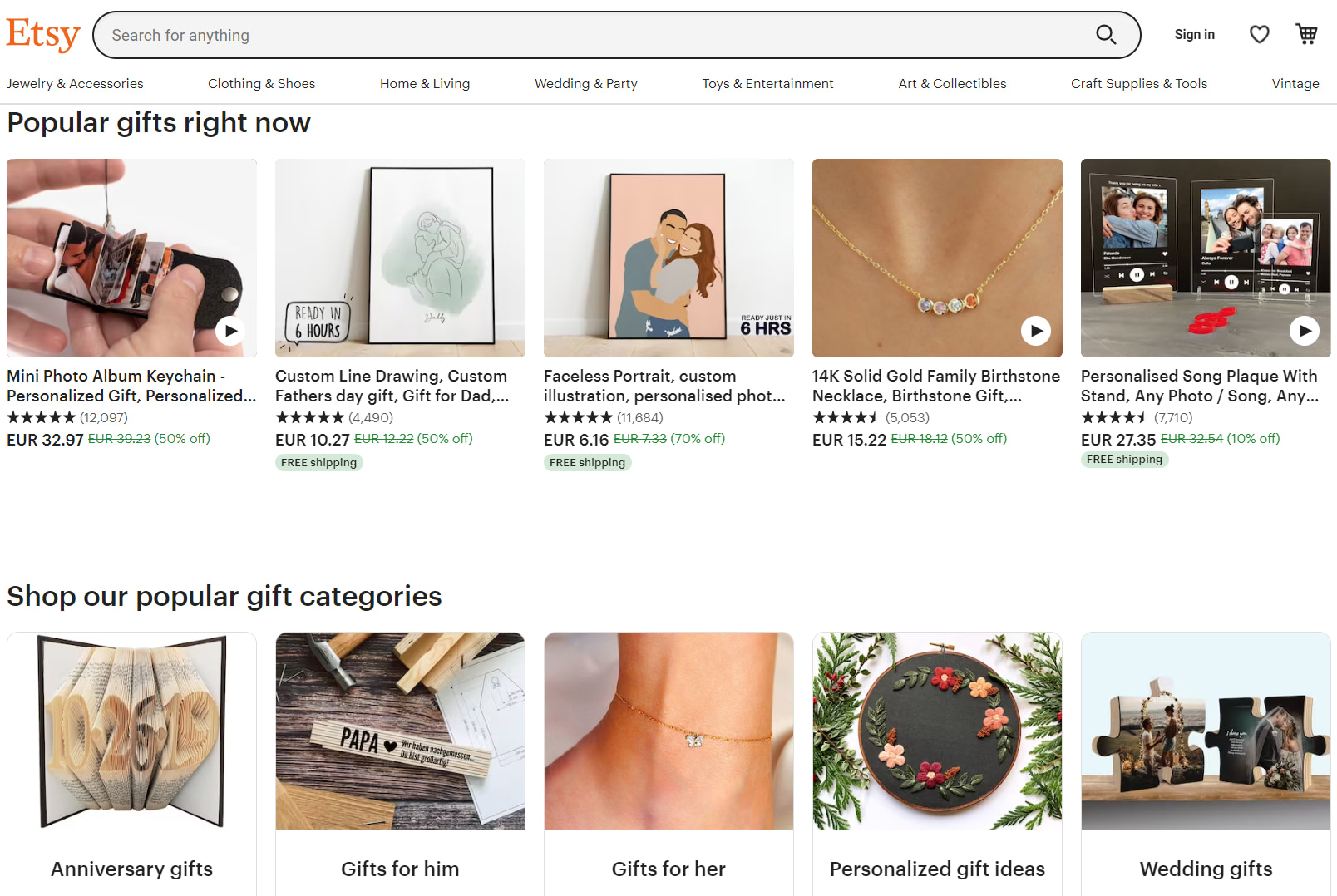
Why do so many people flock to Etsy? It has a huge audience, with Blogging Wizard reporting that 95.1 million people actively purchase on the platform. Etsy also boasts a large roster of sellers, with 7.5 people actively on the platform as of 2025.
Unsurprisingly, you can find nearly anything on Etsy, meaning you can sell a wide range of DIY projects. Here are some items that have sold very well on Etsy:
- Personalized Jewelry
- Stickers
- Decorations and gifts
- Leather products
- Beads
- Crystals, gems, and stones
You can also sell vintage items, clothing, party and paper supplies, wedding items, and crafts.
While Etsy might attract a large crowd, it has several fees you must be cognizant of as you join the platform. They are:
- Listing fee of $0.20 for each listing, which expires in four months.
- Auto-renewal listing fee of $0.20 for each listing, which also expires in four months.
- Private listing fee of $0.20 for each listing.
- Shipping label fees; prices vary.
- Transaction fees are 6.5% of the total amount for the order.
- Square manual fee if selling items in person that aren’t synced from your inventory, which is $0.20 for each transaction, plus Square processing fees.
Amazon Handmade

Amazon is a haven for third-party sellers, but the commerce giant specializes in commercial products. That’s why there’s Amazon Handmade, which caters to homemade sellers.
The categories on the site include baby products, jewelry, pet products, home décor, kitchen and dining products, beauty products, party supplies and stationery, games and toys, clothing and accessories, and handbags and totes.
Create a selling account and apply to join. If approved, Amazon waives its monthly Professional Selling fee, which is $39.99. You can also ship via Fulfillment by Amazon.
You will lose 15% on all sales made, which is Amazon Handmade’s referral fee.
eBay
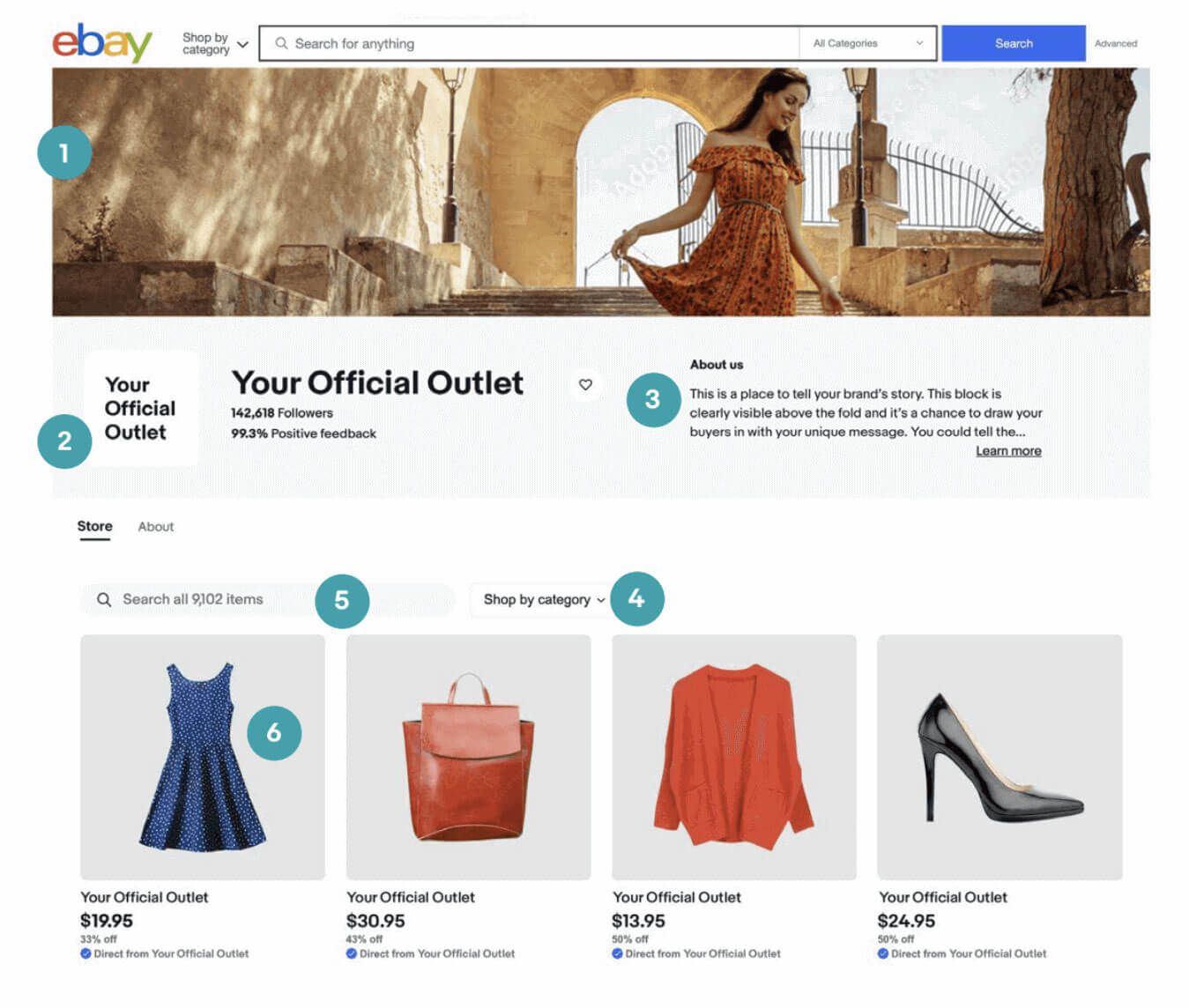
With 135 million global eBay users, this platform is still an ultra-viable one for selling homemade items. Granted, the sheer multitude of categories and sellers makes it tough to get a foothold.
After all, eBay has over 18.3 million seller accounts with more than 1.7 billion listings.
If you’re willing to give it a go, you need to know about these fees:
- 250 zero insertion fee listings, then insertion fees that are charged per category and listing and are nonrefundable.
- Good ‘Til Canceled listings, which are fixed price listings that include a listing upgrade fee (optional) and insertion fee (not optional). This fee is renewed monthly.
- Final value fees, which are $0.30 an order plus a percent of the total sale amount.
Shopify
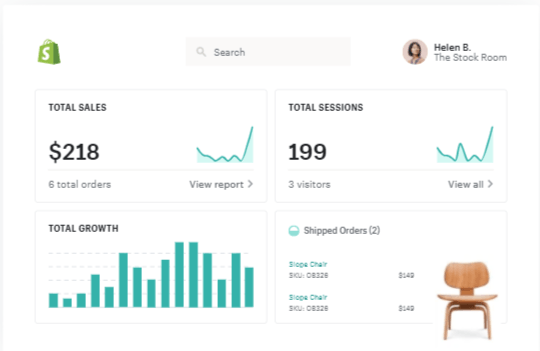
Shopify is by far one of the biggest marketplaces for selling handmade items. The site has 700 million buyers. More than 4.4 billion online storefronts populate the site.
So many people choose Shopify because it’s scalable. It’s not solely a place for homemade goods, but more merchants have begun carving out that niche on the platform, giving Etsy a run for its money.
The eCommerce platform has such a large audience that you can easily and quickly grow your store, but making a name for yourself in such a crowded market can take time and effort.
Shopify charges $29 a month for solo entrepreneurs, but you will only pay $1 a month for your first three months while you get established. Under that plan, you can enjoy 10 locations for inventory and a 77% discount on shipping.
Otherwise, you’re charged a payment processing fee for domestic or cross-border sales, a third-party transaction fee if you use a third-party payment provider and a currency conversion fee.
Read also: 14 Farmers Market Ideas — What to Sell to Stand Out
indieCart

If you’d rather stick to platforms that are solely about independent sellers and homemade goods, indieCart is an excellent option to explore.
The product categories range from art and design to bath and body, toys and dolls, home accessories, jewelry, pet items, and upcycled items.
You can sell crafts online on indieCart by registering and creating an account. Submit your application, and you will hear within 24 hours whether you got accepted.
Maintaining a store is $7.50 per month, but you don’t pay any final value or listing fees. The monthly fee includes image hosting. indieCart also lets you take breaks by not charging you when you’re inactive.
Read also: How To Maximize Profits With Private-Label Products
Facebook Marketplace
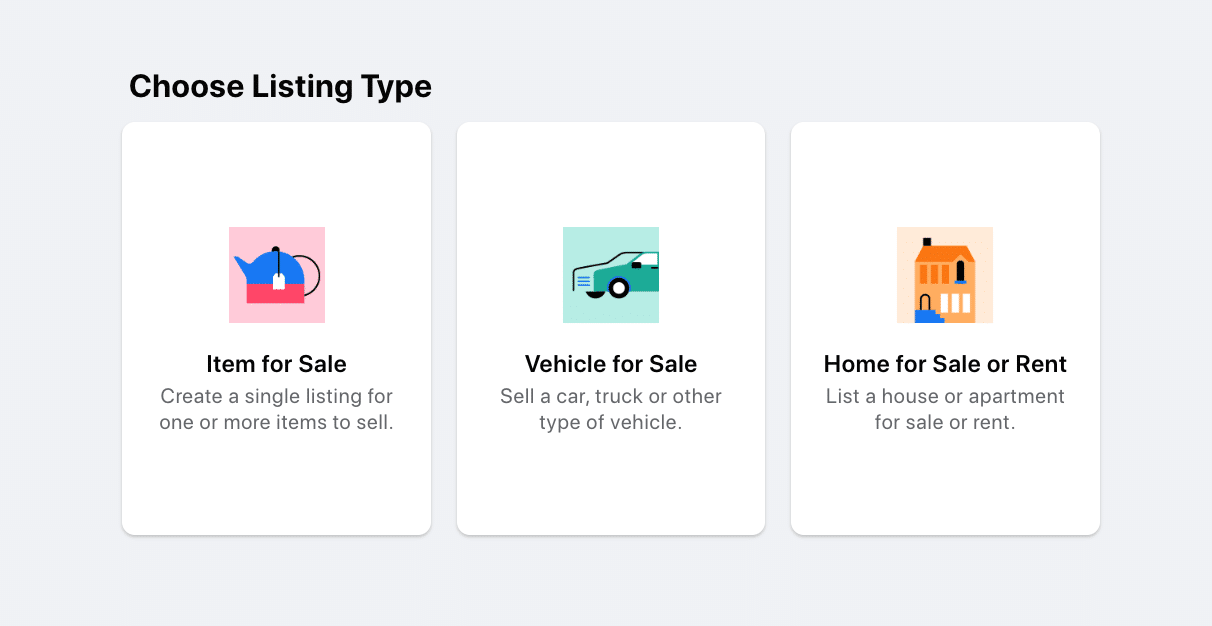
Since it’s free to use if you have a Facebook account, Facebook Marketplace pulls in roughly 40% of Facebook’s user base, which is 3.03 billion users a month. Up to 16% of those with Facebook accounts—approximately 485 million—are on Facebook just for Facebook Marketplace.
Up to 250 million Facebook users sell on Facebook Marketplace. Like eBay, this is another platform where you can find nearly everything under the sun. Some people try to sell commercial products to make a buck (or clear out some space), while others sell handmade crafts.
There is a steep competition to succeed as a merchant on this US platform, but it’s an appealing choice for several reasons. For one, Facebook Marketplace has so much visibility that it exposes you to a potentially large audience.
Second, you don’t have to pay to sell crafts online. You’re only charged a transaction fee as a merchant of 5%, and the fee can be no less than $0.40.
Read also: The Ultimate Guide to Selling on eBay
Big Cartel
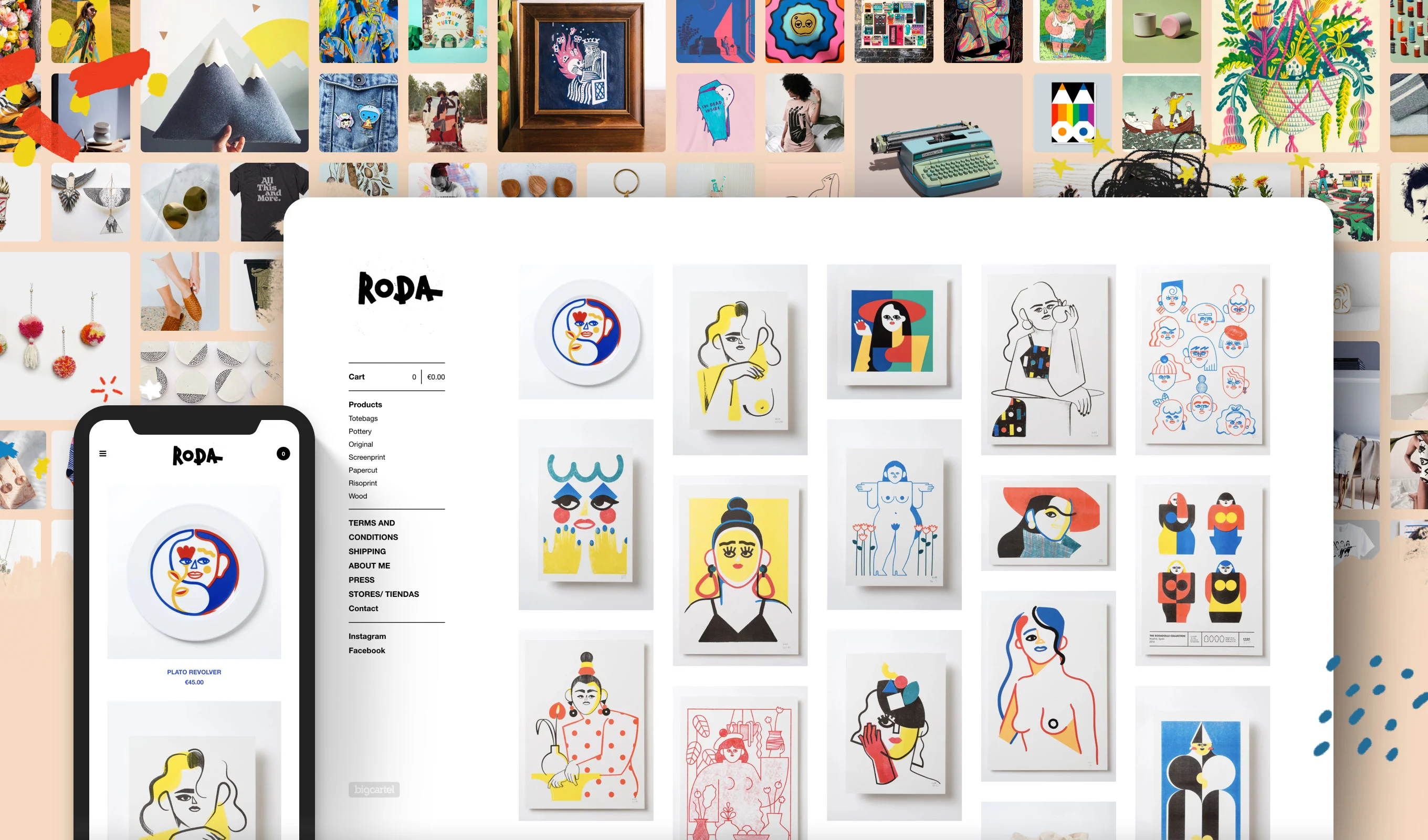
Launch your small DIY handmade goods business with Big Cartel, an online resource exclusively for building stores and selling items.
Big Cartel has 188,774 stores in 2024, so there’s competition, but it’s not as steep as some of the other US-based platforms I’ve reviewed so far.
Like Shopify, Big Cartel has several pricing plans to choose from to take advantage of its services. The good news is that there is a free pricing tier called Gold. However, you’re limited to only five product listings with one image for each product.
The Platinum plan for $9.99 a month is a smart one to choose when you’re just starting out. You can list up to 50 items and add five images for each product.
Big Cartel also has templates you can use to build an attractive storefront, and there are no transaction fees.
Read also: Easy Crafts To Make And Sell: A Guide To Profitable DIY Projects
Selling Handmade Items in Canada
While most of the platforms on the above list have a global reach, if you’re interested in Canadian-based storefronts for selling handmade wares, this list has got you covered.
iCraft
All the items on the iCraft marketplace are handmade, from clothing to jewelry, accessories, toys, party gifts, home décor, wedding and bridal items and gifts, bath and body items, and accessories.
According to iCraft’s website, it attracts roughly 1.3 million visitors from around the world who visit about five pages per session.
iCraft doesn’t take a commission on your sales. Even better, all your customer data is always available to you, and you have the freedom to communicate with your customers. iCraft provides a free .store domain for your site, and you can save 50% if you use the service for another domain.
Connect your social feeds and use sales tools to offer discounts, put together collections or sets, or make custom coupons to get the full extent of the iCraft experience.
MavenFair
All the items on MavenFair have two things in common: they’re exclusively produced in Canada, and they’re handmade. The unique wares for sale range from stationery and cards to artisan foods, party supplies, baby items, bath and body products, clothing, jewelry, and home décor.
Joining MavenFair requires you to select a Maker Shop Level, of which there are three. The basic Maker Shop is Free. You don’t pay any listing fees and can add 10 product listings. You will also be charged 10% as a commission rate on sales.
The Standard Maker Shop costs $4 CDN a month. You can now add up to 60 products listed on your MavenFair shop. You still don’t pay any listing feeds, but you are charged a 5% sales commission.
The Deluxe Maker Shop is $10 CDN per month. You can add as many unique product listings as you want, and you still don’t have to pay listing fees. Your listings won’t expire (that’s the case across all three Maker Shop plans, though). The commission rate remains at 5%.
Amazon Handmade Canada
Amazon has a version of its Handmade service that is specifically for Canadian audiences. It works the same way as the US service. You must sign up for a Professional selling account, which costs $29.99 CDN per month.
However, if you’re approved to start selling your homemade items, Amazon Handmade Canada will waive your monthly fee after your first month with the service.
Read also: What Are Capital Goods? Definition, Importance, and Examples
Selling Handmade Items in Europe and the UK
Branching out further, let’s explore selections of stores welcoming handmade goods throughout Europe, especially the United Kingdom.
Not on the High Street

Established in 2005, Not on the High Street is a UK-based retailer that sells wares made by small businesses and DIY artisans. The online gift shop attracts 100 million online visits a year, and specializes in products like food and drink, home décor, jewelry, cards and stationery, and gifts of all kinds.
You’ll need an account to join, and be prepared to pay the fee of £199 plus VAT. Not on the High Street takes a commission from each sale of 25% plus VAT.
Folksy
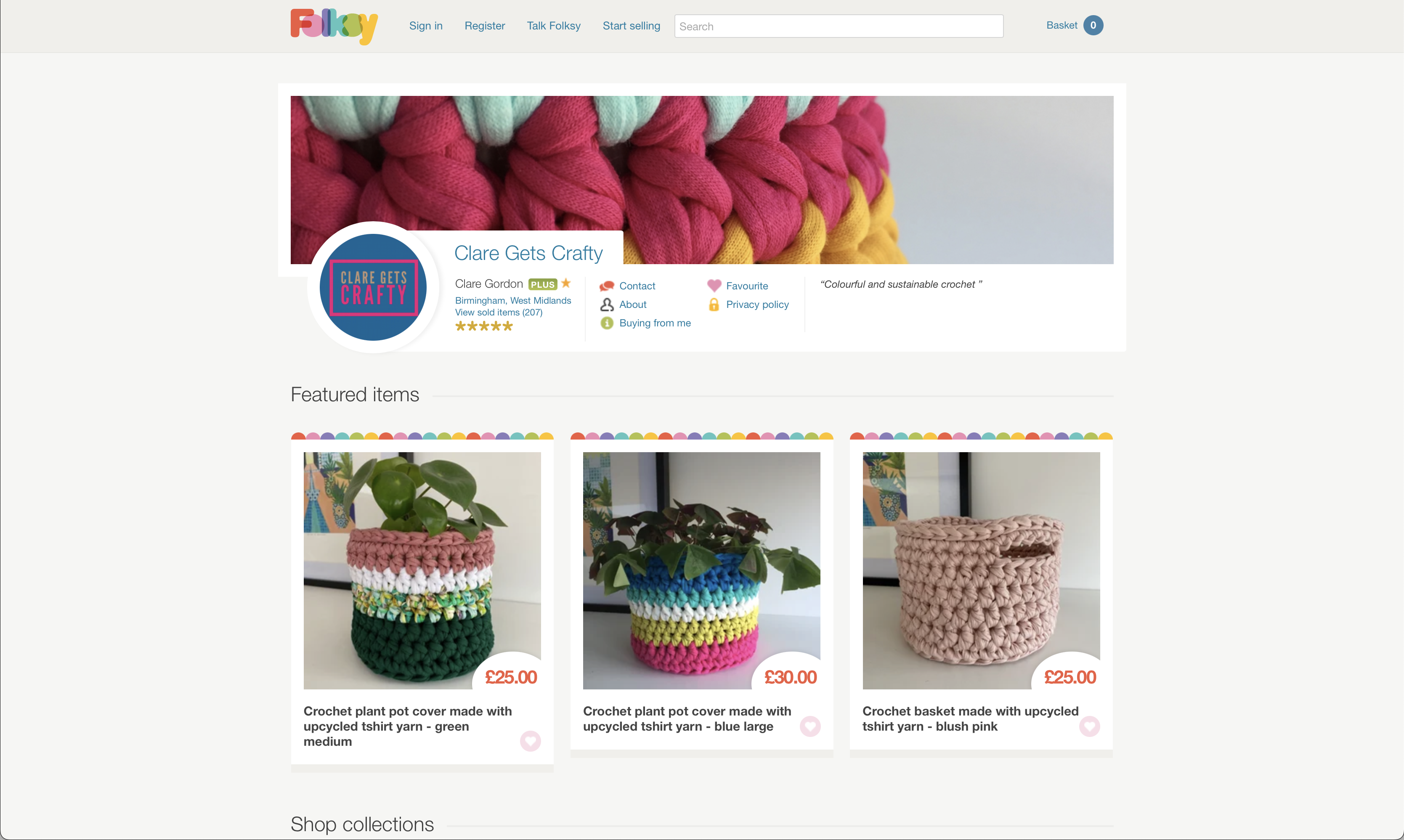
Get in on the craft fair on Folksy, the largest of its kind in the UK. From jewelry to clothing and accessories, home items, art, cards and stationery, and wedding items, there’s a space for you to sell handmade crafts here.
Folksy works in partnership with the Craft Festival, Crafty Fox Market, Peddle, Heritage Crafts, Great Northern Contemporary Craft Fair, Indie Roller, and Crafts Council.
If you choose this platform to sell your DIY wares, you will get your own virtual storefront with support. The storefront will include analytics.
Are you curious about its fees? Here is what you’ll pay to sell handmade items online on Folksy:
- £15 plus VAT for every item you list, with the listing fees payable through Stripe or PayPal.
- Folksy Plus account is an optional upgrade if you sell items in large quantities. The plan costs £7.50 a month (£75 per year).
- Commission fees of 6% plus VAT for every item you sell, regardless of which plan you select.
- A 20% VAT fee.
The British Crafthouse

Since 2019, The British Crafthouse has enabled DIY artisans like you to sell handmade products on a large scale marketplace. All the items displayed here are produced by individuals or businesses, with categories like baby and child items, clothing, wedding items, stationery and cards, jewelry, art, and home and interiors.
You can’t sell supplies through TBC, and you need prior approval to list upcycled goods. All items you sell must be your own, and no vintage or reselling is allowed. You must also be based in Great Britain.
To register, send in your application form and select a Startup plan. You can either pay monthly for £12 a month or annually for £120 for the year.
As a TBC seller, your custom shop will have its own unique URL. You’ll also gain access to an Etsy Import facility, shop analytics, a private Facebook group, and a blog. You can upload 75 products max and add eight images per listing.
If you want to do more with TBC, upgrade your plan. There are three advanced Startup tiers that cost either £30 a month, £300 for a year, or £995 for a year.
The upgraded plans allow you to add more products to your shop, with a limit of 100. If you pay for the top-tier upgraded plan, you can list unlimited products. You will also have access to TBC’s checkout system, with packing slips and invoicing, to manage your orders easily.
Amazon Handmade Europe
Catering to broader Europe, Amazon Handmade Europe is the same high level of Amazon service you’ve grown to expect, just designed for your area. You must create a Seller Central account, then apply for artisan status.
If Amazon approves you, you can begin listing products and use perks like Amazon Fulfillment and sponsored ads to grow your storefront. Amazon has five European shops you can select from when selling your homemade goods.
Becoming a Professional Seller on Amazon Handmade Europe usually requires you to pay £39 a month, but for Handmade sellers, you don’t pay a fee to join. However, you will still lose 12.36% of every sale in referral fees.
Read also: Amazon Marketing Strategy Case Study for The Curious
Selling Handmade Items in Australia
Explore Australia’s platforms if you’re based Down Under. You can sell to a local market and establish yourself before broadening your presence internationally. Check out these great platforms to begin your journey today.
Hardtofind
As a name like Hardtofind might make you imagine, this online platform specializes in personalized and unique items, including fashion, homewares, art, and jewelry. The award-winning platform calls itself “numero uno” for selling on online marketplaces.
Part of that has to do with Hardtofind’s site visits, which are over 10 million a year. Hardtofind is picky about the sellers and wares it accepts, but if you get in, you can use its content management system to manage your storefront.
Hardtofind takes care of the marketing for you and doesn’t charge Australians a fee. If you’re not from Australia but want to open a storefront, you’ll pay $5 AU per order as an International Payment Transfer Fee.
Madeit
In a similar vein is Madeit, an online marketplace that’s based in and operates solely out of Australia. All items available on this platform are handmade and guaranteed for high quality. How so? Madeit has Quality Benchmarks every item must pass before it’s listed.
While you have to pay a subscription plan to use Madeit as a seller and a flat-rate transaction fee, there are no commission fees.
The site attracts more than 35,000 unique visitors a month, so you will have room for growth. You can even set your own shipping rates, running your store your way.
The Make It Collective
Discover Australia’s “Home of Homemade,” The Make It Collective. The makers are all based in Australia, with new ones added every week. You can sell your handmade items in three ways by joining, which is very inventive.
You can sell online, a standard option, obtain retail space, or open a pop-up shop. Selling through The Make It Collective means no contracts or commissions.
You must enroll in a paid plan, either the Start plan with a $15 AUS monthly fee or the annual plan for $147 AUS. The plan lets you add ten products and make eight business-related social media posts a year, including an Instagram shop link.
Artisan Collective Australia
Get selling on Artisan Collective Australia, which specializes in stationery and cards, DIY kits, pet supplies, food and drink, home and garden supplies, baby and kid items, art, beauty products, jewelry, and clothing and accessories.
The Artisan Collective Australia has more than 4,000 monthly visitors and 2,000+ email subscribers. That explains why its artisan network of makers and creators is more than 300 people deep.
You can list your handmade products for free, only paying a 20% commission rate on your items sold. Artisan Collective Australia will take care of marketing your shop for you via its publications, including its newsletter and blog.
Read also: eCommerce Brands: 10 Brands to Watch
Selling Handmade Items in South Africa
South African marketplaces for handmade items are on the rise, with more locally-based platforms to help you grow your presence, audience, and bottom line.
Moksi
The South African platform Moksi, which has a website and app, is a trusted destination for handmade pet supplies, clothing, shoes, baby items, beauty products, jewelry, and home décor.
Selling on this platform puts you in a great position for success. The Moksi team sends buyers your way so your shop can grow and provides tools to help you learn about store management, inventory, and payment processing.
You’ll only pay R139 monthly to keep your virtual storefront open.
Handmade Hub
South Africa’s independent crafters and artists gather on Handmade Hub, a platform with a list of approved vendors so consumers can feel safe shopping. You can sign up for free to begin selling on Handmade Hub.
Read also: How to Sell Handmade Jewelry Online in 7 Easy Steps
Tips for Global Selling
The universal advice I have for you in this section will help you forge stronger customer relationships locally and internationally!
1. Price your items fairly
I can understand the temptation to inflate your prices, especially when you’re first beginning and eager to make some money. However, you will not make sales if you oversell your items, especially on platforms with steep competition like Etsy or Amazon.
Customers would rather spend their money on a similar product that’s more affordable, meaning you’ll lose out on business.
That said, lowering your prices below standard is just as detrimental. You might find yourself breaking even or dipping into the red to maintain your online store.
Use the pricing formula from the FAQs above to determine what you should sell your homemade goods for.
2. Build your brand
As a solopreneur, you are indeed a brand. Although you’re the only one representing it, building a brand can be trickier than you think without experience.
Determine the colors you want to represent your brand, then consider the traits you wish to embody. Next, choose your tone. You should also create a logo, whether you do it yourself, hire someone to produce it, or use a logo maker tool for a quick and easy option.
Keep your brand consistent, as that’s how it becomes a part of your professional identity and sticks in consumer consciousness.
3. Prioritize quality photography
Photography is one of the best ways to differentiate your homemade goods from your competitors, especially in a crowded marketplace. High-quality photography doesn’t necessarily require a professional camera, but if you can get your hands on one, please do.
You can use your smartphone, but check its settings to ensure they’re maxed out.
Here’s another pointer for photography: lighting is key.
Natural lighting is best, as it produces excellent contrast and showcases the range of colors in your creative piece. If your item has warm hues and medium contrast, wait until sunset to shoot, as the golden sunlight will make your craft look amazing.
If your item has more neutral shades or whites, shoot in the morning or midday.
4. Get on social media
You must have a social media presence outside of your store. When new listings go up, you can share them straight to your favorite social platforms so your most loyal customers can buy first.
Make sure you create a business page for your handmade items; don’t use your personal page. You can request that your followers check out your new crafts page using your personal account, but once your business account starts getting hits, use that for professional purposes going forward.
5. Write strong, descriptive product titles and listings
If you want to make a good impression, you need to focus on the title and listing for each product in your store. The title especially will either grab internet users and pull them in or inspire them to keep scrolling right by you.
A good title should be concise, catchy, and relevant, above all else. If you can include your unique selling proposition in the title, then do so. However, if you can’t, insert it in the listing.
The product listing needs as much detail and description as you can muster. Your copy should sing without ringing too salesy. Write in a down-to-earth yet benefits-focused style, using emotional elements to make your audience realize what they’re missing out on if they don’t buy your products (limited edition sale, one-of-a-kind item, etc.).
6. Learn about duties and customs, including who’s responsible for them
It’s an exciting time when your eCommerce store grows to encompass an international audience, but it also comes with its own set of responsibilities. For example, you have to look into customs and duties.
Delivered duty paid or DDP usually puts the onus of importation costs on the seller. That includes duties as well as disbursement or brokerage fees and import taxes.
Read also: 23 Sales Books With Honest Reviews
Conclusion
Artisans all over the world, rise up and make your dreams come true.
You can explore local and international online marketplaces to sell your handmade items. Many of today’s biggest platforms provide all the support and information you need to get your store up and achieve your dreams, so it’s time to begin!
EngageBay is an all-in-one marketing, sales, and customer support software for small businesses, startups, and solopreneurs. You get email marketing, marketing automation, landing pages, email templates, segmentation, contact management, and more.
Sign up with EngageBay for free, or book a demo with our experts.
Frequently Asked Questions (FAQ)
1. What handmade items sell the most?
It varies based on platform and preferences, but clothing and apparel, jewelry, handmade beauty products like bath bombs and soap, pet supplies, handmade toys, wall art, and prints are popular. Consumers generally love personalized gifts.
2. What should I charge for handmade items?
You can calculate the hourly rate of your crafted goods by determining how many hours it took you to create the item and then multiplying it by your predetermined hourly rate.
3. How do I package handmade items?
Carefully! Depending on what you’re shipping, you can use clear sleeves, pillow boxes, gift boxes, fabric boxes, or standard shipping boxes. Add packing foam, bubble wrap, and/or packing peanuts to stabilize items.
